9 Pieces of Music Memorabilia That Defined an Era
Music memorabilia holds more than just sentimental value, as they are also pieces of history from that era. From iconic album covers to stage-worn instruments, these pieces offer a tangible connection to the moments that shaped music history. Many items have become sought after by collectors, often commanding high prices. If you ever wondered about the objects that captured the spirit of a generation, this is your chance to explore.
This post may contain affiliate links, which helps keep this content free. Please read our disclosure for more info.
Jimi Hendrix’s Woodstock Guitar
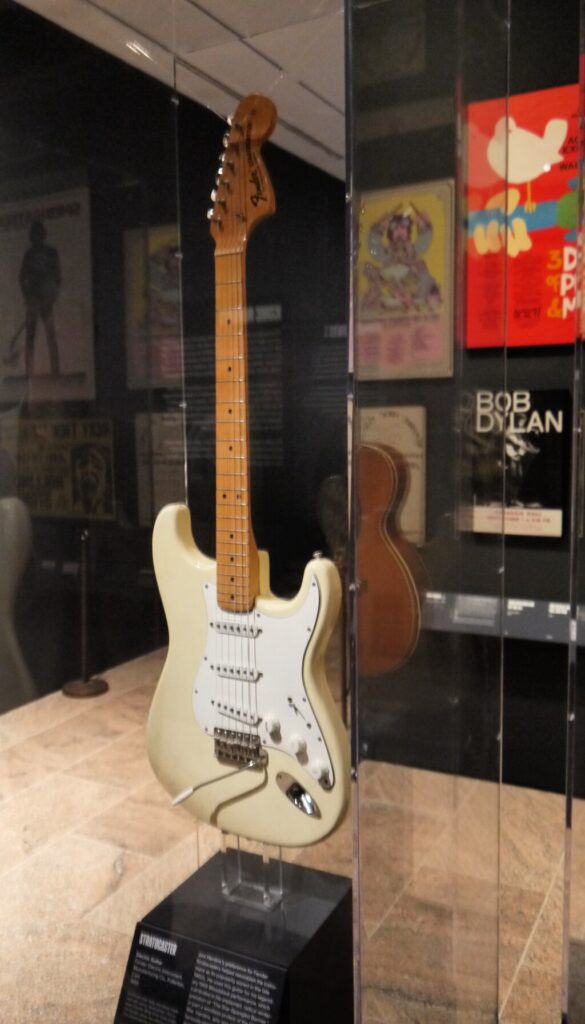
Jimi Hendrix’s performance at Woodstock in 1969 is regarded as one of the most iconic moments in music history. The guitar he played during the performance, a white Fender Stratocaster, became an instant symbol of the 1960s counterculture. Hendrix’s electrifying performance of “The Star-Spangled Banner” at the festival turned the guitar into a cultural artifact.
The guitar was eventually sold at auction for millions of dollars, making it one of the most valuable music instruments ever sold. The instrument’s value is not just in its history but in the way it represents the spirit of the era. Its connection to the Woodstock festival, with its message of peace and love, continues to resonate with fans. Collectors still seek this guitar for its unique role in shaping music history.
The Beatles’ Abbey Road Album Cover Photo
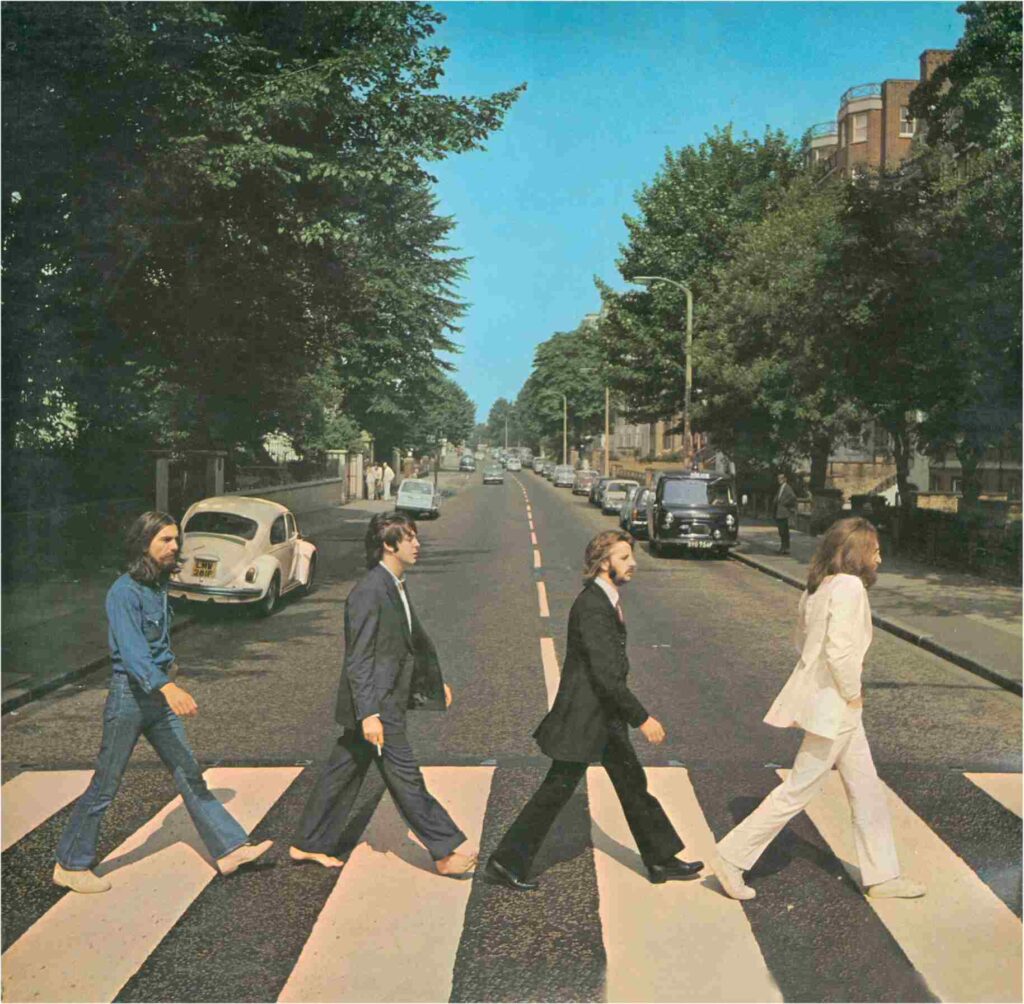
The cover of Abbey Road, released in 1969, has become one of the most recognizable images in music. Featuring the Beatles walking across a zebra crossing in London, it has come to symbolize the band’s legacy. The photograph captures the members at a pivotal moment in their career and is considered one of the most famous album covers in history. Fans and collectors alike have sought out original prints of this iconic image.
In addition to its cultural significance, the album itself represents the closing of an era for the Beatles, marking their final studio recordings together. First-generation prints of the cover are highly prized and fetch significant sums at auctions. The photo’s simplicity yet profound impact is part of what makes it such a defining piece of memorabilia.
Elvis Presley’s 1956 Cadillac
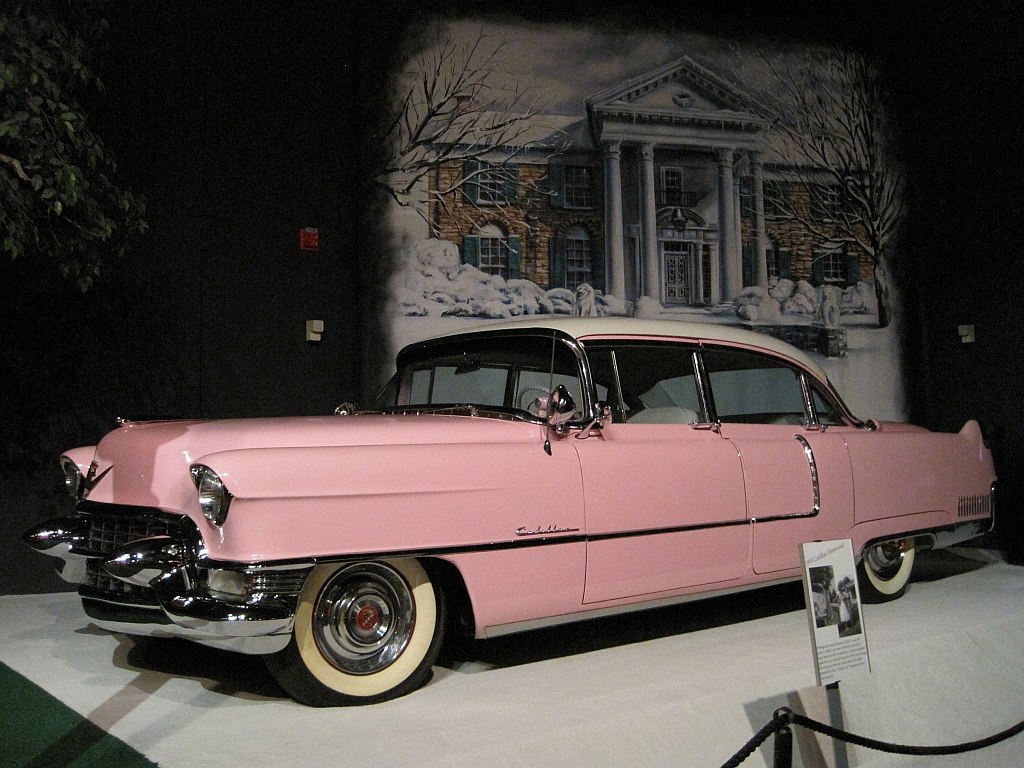
Elvis, known for his love of flashy cars, drove this Cadillac during the height of his fame. The car represents the glitz and glamour of the 1950s rock scene and embodies Elvis’s larger-than-life persona. It is considered one of the most important pieces of memorabilia tied to the King of Rock and Roll.
The vehicle was later auctioned for a significant sum, reinforcing its place as a coveted item for collectors. The Cadillac’s distinctive pink and white color scheme only adds to its value, making it stand out as a symbol of Presley’s unique style. This car also serves as a reflection of the era’s pop culture and the connection between music and lifestyle.
Michael Jackson’s ‘Thriller’ Jacket
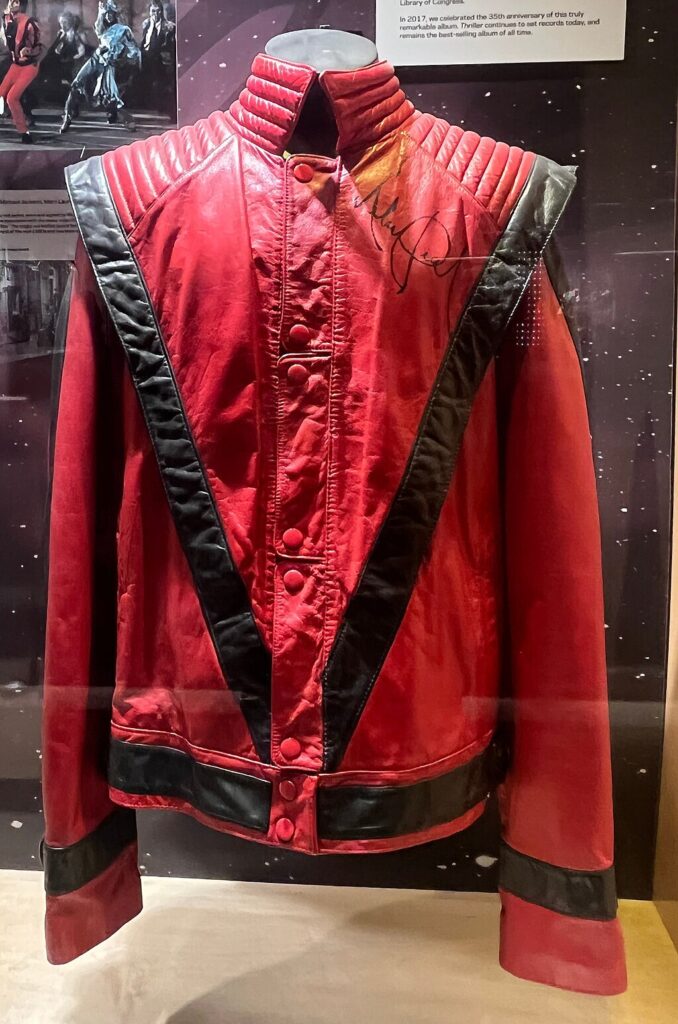
Michael Jackson’s red leather jacket, worn in the “Thriller” music video, is one of the most iconic costumes in music history. The jacket is instantly recognizable, representing Jackson’s groundbreaking fusion of pop and performance. It played a significant role in making “Thriller” one of the most influential music videos of all time. Fans and collectors alike prize the jacket for its association with the King of Pop and his legendary contribution to music and dance.
The jacket was eventually auctioned off for a considerable sum, solidifying its place as a cultural artifact. Jackson’s “Thriller” album remains one of the best-selling albums of all time, and the jacket symbolizes the peak of his career. Its value goes beyond its material worth, as it represents a pivotal moment in pop music history.
The Rolling Stones’ Lips and Tongue Logo
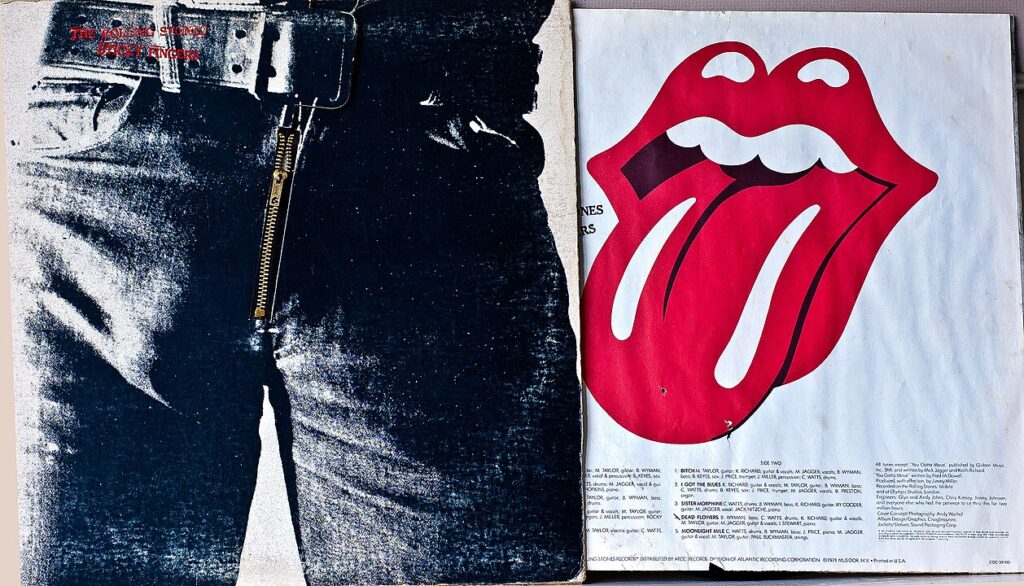
The Rolling Stones’ lips and tongue logo, designed by John Pasche in 1970, is one of the most recognizable symbols in music. The logo first appeared on the cover of their album Sticky Fingers and has since become synonymous with the band’s rebellious image. Its bold design, coupled with the Stones’ wild rock and roll persona, cemented it as an iconic symbol in music.
The original design, which has been used on countless albums, merchandise, and promotional materials, continues to be in high demand. It has been replicated on everything from shirts to tattoos, further ingraining the logo into pop culture. As one of the most famous band logos ever, it stands as a lasting reminder of the Rolling Stones’ influence on rock music. Collectors of Rolling Stones memorabilia often seek out items featuring this logo.
The Clash’s ‘London Calling’ Guitar
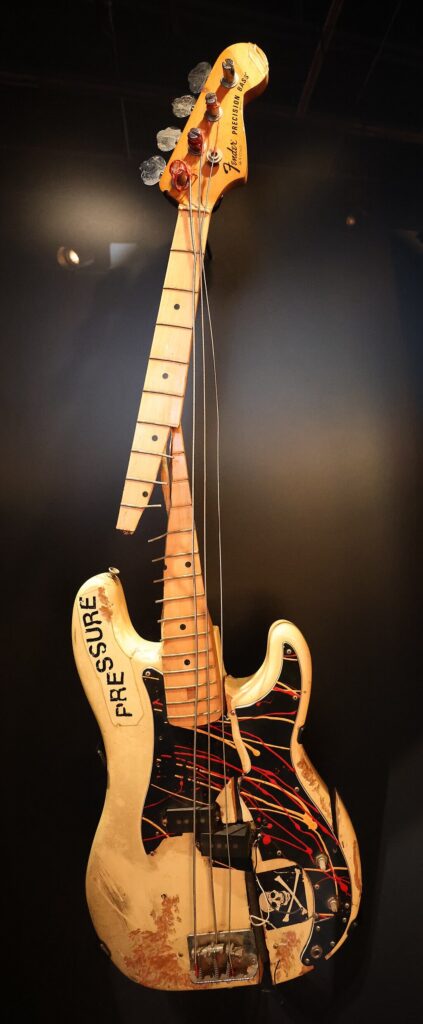
The Clash’s London Calling album, released in 1979, became a defining moment in punk rock history. The guitar used during the recording of the album is a key piece of memorabilia that represents the rebellious spirit of the band. It is said to embody the DIY ethic and raw energy that defined the punk scene. The album itself is a milestone in rock music, and the guitar ties directly to its iconic sound.
This guitar was auctioned for a remarkable price, reflecting both its connection to a revolutionary album and the legendary band. The Clash’s music, known for its fusion of punk and reggae, left an indelible mark on the music world. The guitar stands as a symbol of the era’s defiance and creativity. Collectors who acquire this item own a direct link to one of the most influential albums in history.
Kurt Cobain’s ‘Unplugged’ Cardigan
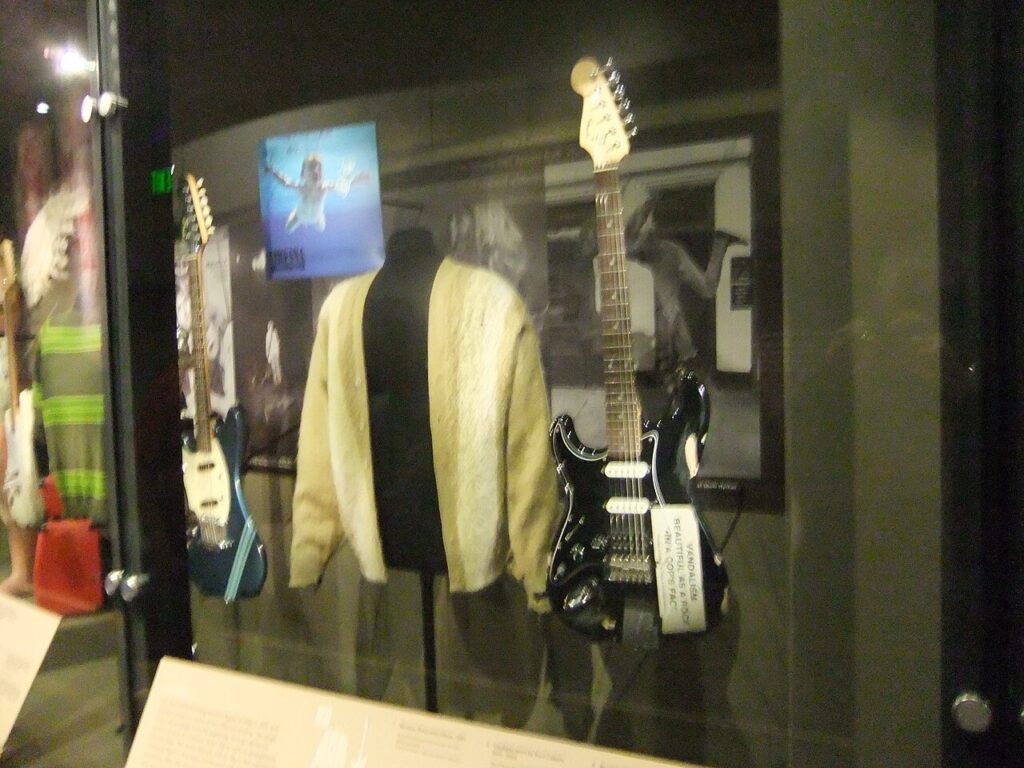
Kurt Cobain’s green cardigan, worn during Nirvana’s MTV Unplugged performance in 1993, has become a symbol of both Cobain’s persona and the grunge movement. The performance was a pivotal moment in Nirvana’s career, showing the band in an intimate, acoustic setting. Cobain’s cardigan, casual and unassuming, became synonymous with his down-to-earth, anti-commercial image.
The cardigan has since been auctioned off for a significant sum, highlighting the ongoing interest in Cobain and Nirvana’s impact on music. The performance and the sweater are both viewed as a cultural touchstone, representing the vulnerability and raw emotion that defined grunge music. Fans of Nirvana continue to seek out items tied to Cobain’s legacy. This piece of memorabilia connects collectors to one of the most influential figures in rock history.
John Lennon’s ‘Imagine’ Piano
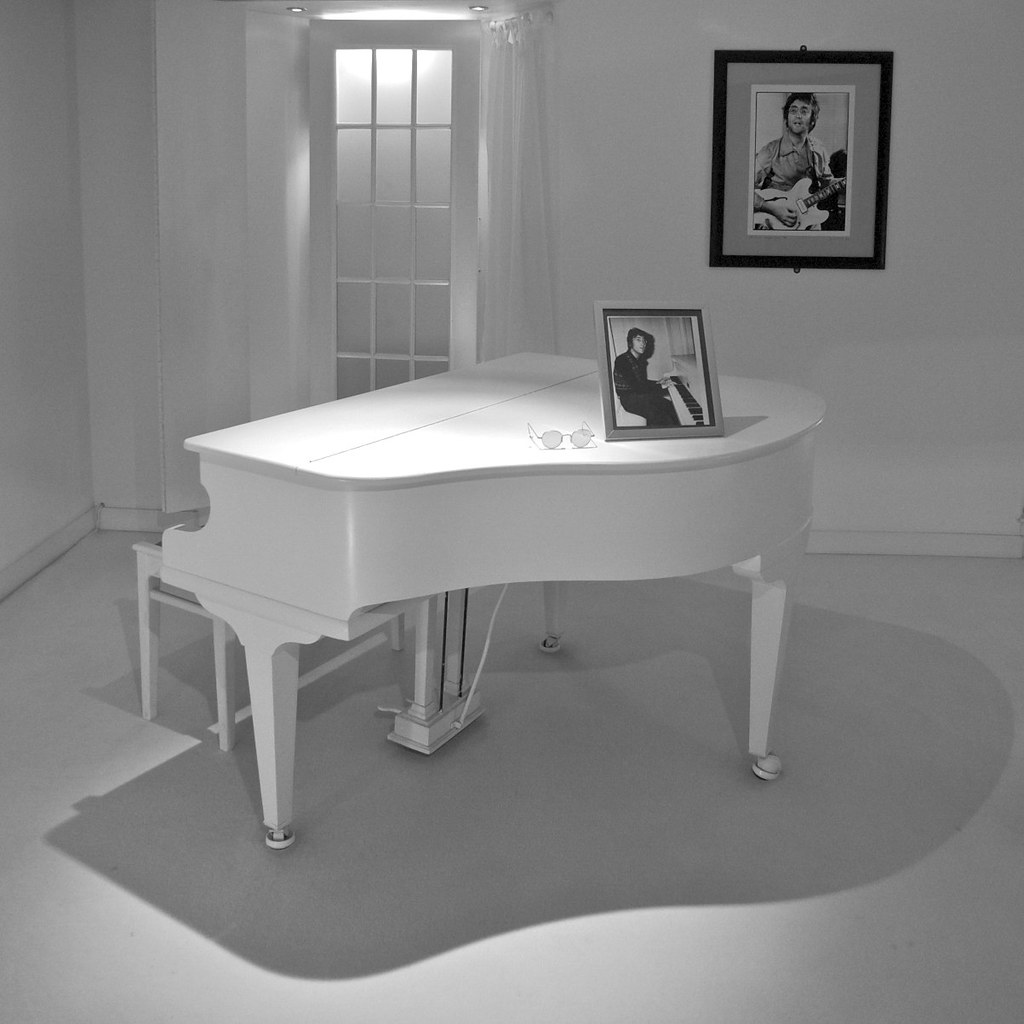
The piano that John Lennon used to compose the song “Imagine” has become one of the most sought-after pieces of music memorabilia. The song, one of Lennon’s most enduring legacies, has influenced generations with its message of peace and unity. The piano itself is an object of immense historical significance, tied directly to one of the greatest songs in music history. Lennon’s impact, both as a solo artist and with The Beatles, continues to resonate.
The piano has been sold at auction for millions, underscoring its place as an irreplaceable item in the music world. It not only represents Lennon’s musical genius but also the ideals he championed through his work. For collectors, owning the piano is like holding a piece of history that shaped the cultural landscape. This item remains a symbol of Lennon’s enduring legacy.
Nirvana’s ‘Nevermind’ Baby Photo
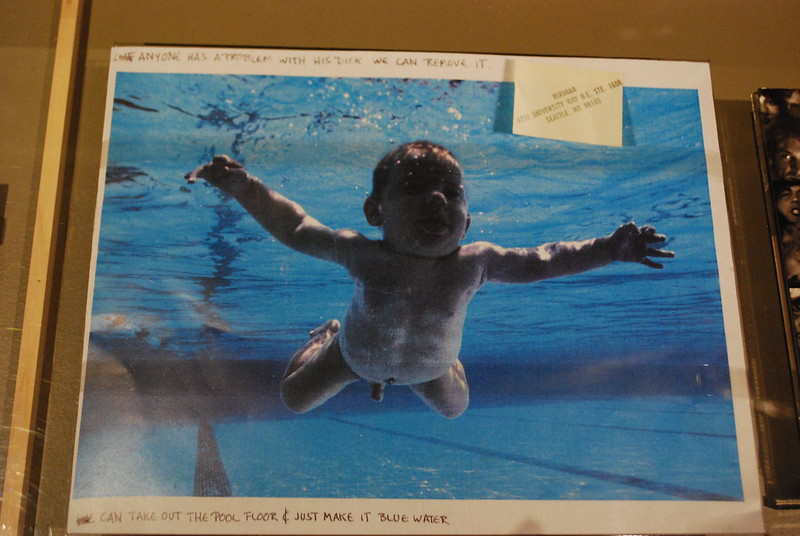
The Nevermind album cover, featuring a naked baby swimming towards a dollar bill on a hook, is one of the most famous images in rock music history. The image, which caused a stir upon its release in 1991, perfectly captured the raw energy and disillusionment of the early 90s grunge movement. The photograph, taken by photographer Kirk Weddle, became an icon, symbolizing the anti-establishment ethos of Nirvana and the grunge scene.
Original prints of the Nevermind cover photo are highly collectible, especially those that are signed by the surviving members of Nirvana. The album, which marked Nirvana’s breakthrough, remains one of the best-selling albums of all time. The iconic cover photo not only captures the essence of the album but also reflects a generation’s attitude. As a piece of music memorabilia, it holds immense value both in terms of its historical significance and its connection to the cultural upheaval of the 1990s.
This article originally appeared on Avocadu.
